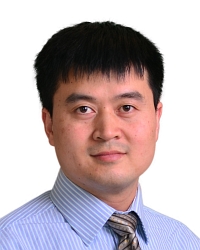TR2023-131
Extended Kalman Filter-based Predictive Maintenance of High-Voltage DC/DC Converter
-
- , "Extended Kalman Filter-based Predictive Maintenance of High-Voltage DC/DC Converter", IEEE Industrial Electronics Society (IECON), DOI: 10.1109/IECON51785.2023.10312019, October 2023.BibTeX TR2023-131 PDF
- @inproceedings{Rahman2023oct,
- author = {Rahman, Syed and Liu, Dehong and Menner, Marcel and Wang, Yebin and Takegami, Tomoki},
- title = {{Extended Kalman Filter-based Predictive Maintenance of High-Voltage DC/DC Converter}},
- booktitle = {IEEE Industrial Electronics Society (IECON)},
- year = 2023,
- month = oct,
- publisher = {IEEE},
- doi = {10.1109/IECON51785.2023.10312019},
- issn = {2577-1647},
- isbn = {979-8-3503-3182-0},
- url = {https://www.merl.com/publications/TR2023-131}
- }
- , "Extended Kalman Filter-based Predictive Maintenance of High-Voltage DC/DC Converter", IEEE Industrial Electronics Society (IECON), DOI: 10.1109/IECON51785.2023.10312019, October 2023.
-
MERL Contacts:
-
Research Areas:
Abstract:
Isolated converters are the ideal candidate for high-gain DC/DC converter applications. Although the design of converters considers safety margins and derating requirements to ensure acceptable performance until the end of product life, it does not completely rule out any early component failure. It is inevitable that the post-deployment stresses result in component aging and subsequent failure before the end of its useful life. To minimize downtime, early failure signatures need to be detected for predictive maintenance, which requires continuous/periodic monitoring of critical components. This paper presents an Extended Kalman Filter (EKF)-based predictive maintenance algorithm of a 2kW, 270V/28V DC/DC converter. The detailed mathematical framework and observability analysis highlighting the feasibility of state/parameter estimation are presented. Based on observability analysis, the converter operating condition is devised such that accurate parameter estimation is achievable at a lower sensor sampling rate (equal to the switching time period). The significance of module-exclusive measurements on the observability and estimation of parameters is also discussed for a two-module system. The analyses presented are validated with detailed simulation results for single (2kW) and double (2x2kW) modules to estimate parameters of the filter inductor and the output capacitor.

